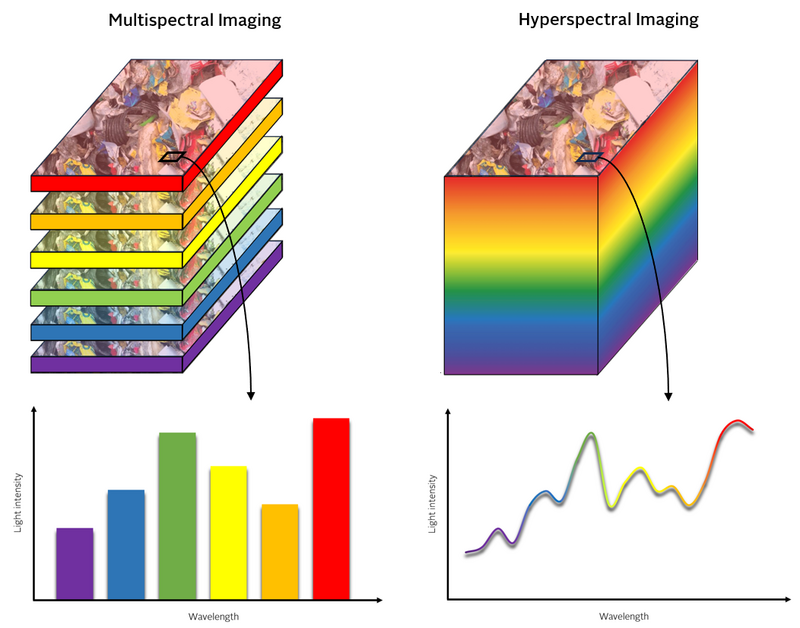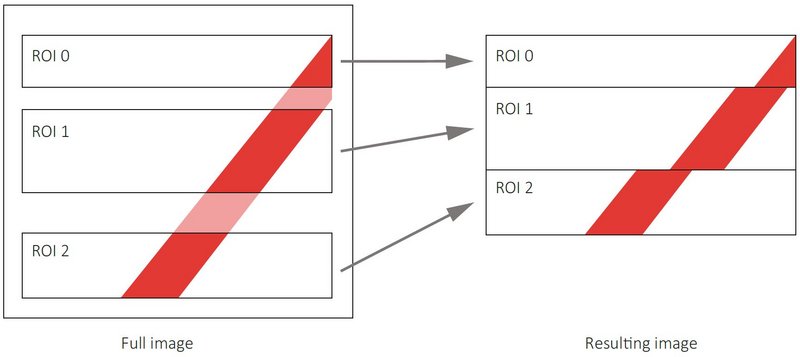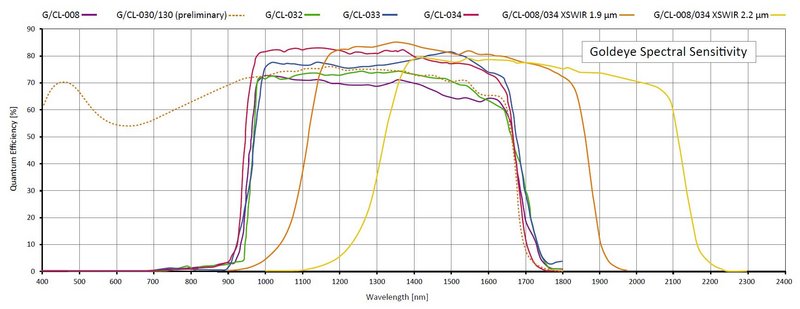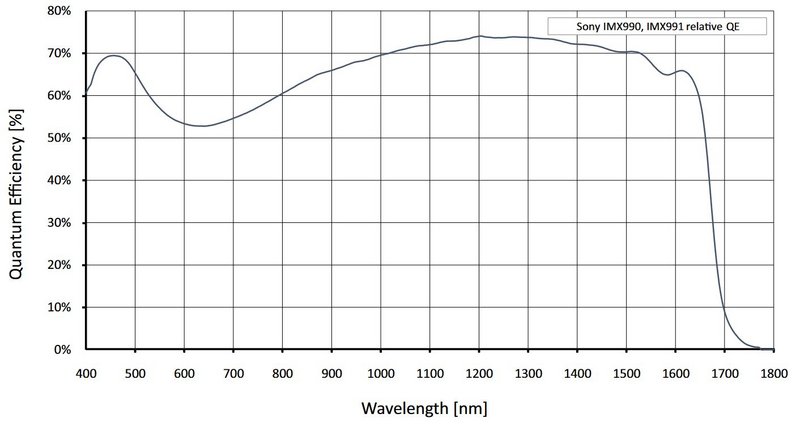Find the right SWIR camera for spectral imaging
Every application has its individual requirements. We know how to help you find the best camera solution for your application.
Conventional RGB-type cameras only make use of a limited range of wavelengths in the visible and partly NIR range of the spectrum and are lacking a lot of spectral information available. To overcome this shortage various spectral imaging technologies can be applied to capture and analyze detailed spectral data from an object or scene, providing valuable insights beyond what traditional imaging methods can offer.
Spectral imaging has revolutionized many fields by providing non-invasive, non-destructive, and highly informative analysis capabilities. It’s nowadays applied in many application fields, including Food & Beverages, Recycling, Remote Sensing in Agriculture and Mining, Medical, or Astronomy.
At its core, spectral imaging involves the acquisition of images at different wavelengths across the electromagnetic spectrum, from ultraviolet to visible and up to infrared regions. By analyzing this spectral data, one can gain a deeper understanding of the composition, characteristics, and behavior of the imaged objects or materials.


Spectral Imaging Technologies for HSI- and MSI Solutions
- Hyperspectral Imaging (HSI): This technique involves capturing images at numerous narrow and contiguous spectral bands (typically several hundreds), resulting in high spectral resolution. Each pixel in a hyperspectral image contains a complete spectrum, and all images together build an HSI image data cube, allowing for detailed analysis and identification of materials based on their spectral signatures.
- Multispectral Imaging (MSI): Unlike HSI, MSI acquires images at a limited number of discrete spectral bands (typically 3-16). Nevertheless, if the spectral features of an object to be identified are known, it is often sufficient to apply less spectral bands to reduce system costs and to speed-up processes.
Spectral imaging systems utilize various types of optical components, such as prisms, gratings, interferometers, as well as interference- or tunable filters, to selectively transmit or block specific wavelengths. They are matched with dedicated area-scan sensors to capture HSI or MSI data cubes.
Snap-shot systems
- Tunable spectral-filter based cameras
- Interferometer-based Fourier-Transform HSI cameras for low-light imaging
- Micro-lens-array based light-field camera
- Cameras with on-pixel filter technology
Line-scan systems
- Linear variable filters on sensor chip
- Classic grating based push-broom HSI cameras for highest data quality / highest spectral resolution
The camera requirements for a spectral imaging solution are manyfold and depend strongly on the intended application and the level of accuracy and precision required for the analysis. In general, it’s a mixture of features, the most important ones are:
- High but steady quantum efficiency over the entire spectral range of the sensor/system.
- Linear response of the pixels in dependency of the light intensity.
- Homogenous intensity distribution of pixels detecting the same wavelength.
- Multiple-ROI selection is especially important for push-broom (line scanning) HSI systems, as this feature enables to reduce data sizes and eases the signal processing.
- High frame rates are in general beneficial to speed up processes, but only as long as sufficient signal is captured at short exposure times. Here a higher light intensity can help, but it also needs to be prevented that the inspected objects get heated up.
- High sensor resolution is relevant for multi-spectral imaging systems using on-pixel filters or miniaturized optics with filters, as the number of filters is reducing the overall resolution of the spectral image.
- For systems requiring longer exposure times also sensor cooling using thermoelectric coolers (TECs) is beneficial to reduce dark current induced noise and to keep SNR high.
- Boardlevel cameras with or without sensor glass (RCG option) to build compact OEM spectral imaging cameras.
- Easy to use interfaces like GigE Vision or USB3.
SWIR cameras for hyper- and multi-spectral imaging
Allied Vision is offering a broad selection of SWIR cameras suitable for hyper- and multi-spectral imaging, ranging from resolutions between QVGA to SXGA (0.3-1.3 mega-pixels) at spatial resolutions of 30µm down to 5µm, and spectral sensitivities from 400nm up to 2.2µm. All cameras have high and relative steady quantum efficiency (see diagram on the left) over the supported spectral range.
Alvium SWIR and Goldeye SWIR cameras support spatially and spectrally flexible multiple ROI selection, which is a great advantage for push-broom HSI cameras. Thus, in combination with the cameras' high standard frame rates, it is possible to accelerate processes and reduce computing power.
To build compact multi spectral imaging systems Alvium SWIR cameras are available as boardlevel version with Removed Cover Glass order options (RCG) enabling to add pixel-based filter arrays to design application specific high-volume OEM solutions.
Goldeye SWIR cameras with thermoelectric sensor cooling (TEC) allow the sensor temperature to be stabilized, reducing noise caused by dark current, and enabling longer exposure times. Cooling the sensor also keeps the noise floor low, allowing for a higher SNR. In addition, spectral imaging results are reproducible.
All cameras provide a high linearity and image homogeneity supported by automatic 2-Point correction that can be disabled on demand or the sensor itself (IMX99x).
Finding the right camera for your application
You are a spectral imaging system manufacturer and would like to discuss with us a customized camera design incorporating special functionalities or mechanical adoptions to meet your requirements? Our experienced technical experts look forward to realizing your individual OEM spectral imaging camera solution.
You are an end-user and are looking for a specific spectral imaging solution? Don’t hesitate to tell us your application specific needs and we will bring you in contact with the right solution partner to solve your spectral imaging task.
Our engineers design digital cameras with a large scope of resolutions, frame rates, bandwidths, interfaces, spectral sensitivities, sensor technologies, and technical platforms.
Back to Infrared & Hyperspectral Imaging



